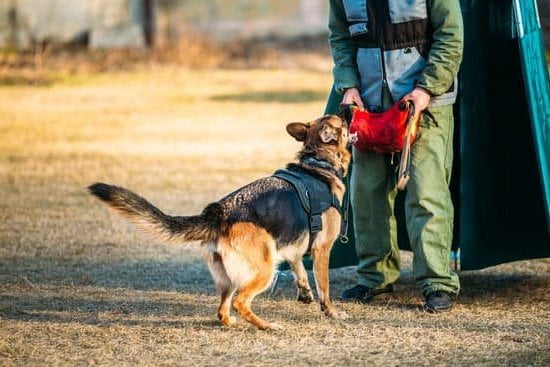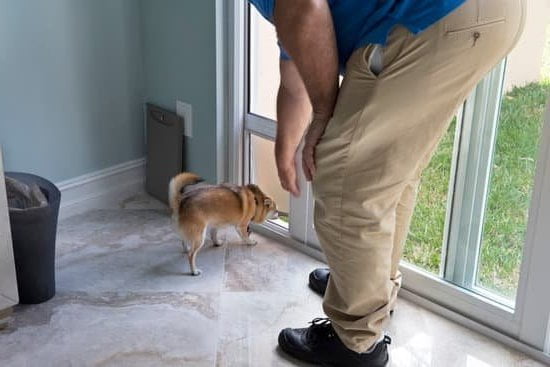Separation anxiety can be a distressing experience for both dogs and their owners. In this introductory section, we will delve into the world of separation anxiety in dogs and explore effective training techniques to help alleviate this issue. It is crucial to recognize and address separation anxiety early on to ensure the well-being and happiness of your beloved furry friend.
Separation anxiety refers to the excessive fear or distress that dogs experience when separated from their owners or left alone. This condition can manifest in various ways, such as excessive barking or howling, destructive chewing, urinating or defecating indoors, or pacing anxiously. Understanding the signs and symptoms of separation anxiety is essential for accurately identifying if your dog is suffering from this condition rather than exhibiting general behavioral problems.
Recognizing separation anxiety in its early stages allows for timely intervention and proactive training measures. By addressing separation anxiety promptly, you can alleviate your dog’s distress and prevent it from worsening over time. In this blog post, we will provide you with a comprehensive guide on how to train your dog to stop having separation anxiety using proven techniques.
Throughout this article, we will cover various topics including understanding the signs and symptoms of separation anxiety, preparing your home for training, gradual departure exercises, obedience training and enrichment activities, behavioral modification techniques, seeking professional help when necessary, consistency and patience in the training process. We are dedicated to helping you create a happier and more independent dog by successfully addressing their separation anxiety. Let’s embark on this journey together.
Signs and Symptoms of Separation Anxiety
Understanding the signs and symptoms of separation anxiety in dogs is crucial for effectively addressing this behavior. By being able to recognize these indicators, dog owners can take the necessary steps to alleviate their pet’s distress and promote a healthier mindset when left alone. Here are some common signs and symptoms that may indicate separation anxiety in dogs:
- Barking or howling excessively: Dogs with separation anxiety may vocalize excessively when they are left alone, expressing their distress through constant barking or howling.
- Destroying objects: When experiencing separation anxiety, dogs may resort to destructive behaviors, such as chewing furniture, shoes, or other household items.
- Attempts to escape: Dogs with separation anxiety may try to escape from their confinement area by scratching at doors or windows or digging frantically near exits.
- Potty accidents: Even if your dog is typically house-trained, they may have accidents indoors when suffering from separation anxiety.
It’s important to note that not all destructive behaviors or accidents inside the house are necessarily indicative of separation anxiety. Some dogs may engage in these behaviors due to boredom or lack of physical exercise. To differentiate between regular behavioral issues and true separation anxiety, it’s essential to observe your dog’s behavior closely.
During your observations, consider whether the behavior only occurs when you’re about to leave the house or is triggered by specific cues associated with your departure, such as picking up your keys or putting on your coat. If the anxious behavior is consistently linked to your departure and subsides once you return home, it is more likely a sign of separation anxiety.
To gain a better understanding of how your dog reacts when left alone, consider setting up a camera system that allows you to monitor their behavior remotely. This will provide valuable insights into your dog’s actions while you’re away and help determine if separation anxiety is indeed the underlying issue.
By recognizing and understanding the signs and symptoms of separation anxiety, you can take proactive steps to address this behavior effectively. In the next section, we will discuss how to prepare your home for training your dog to overcome separation anxiety.
Preparing Your Home for Training
When it comes to training a dog with separation anxiety, creating the right environment is crucial. Preparing your home in advance can help set your pup up for success and make the training process smoother. In this section, we will provide tips and recommendations for preparing your home for separation anxiety training.
One of the first steps in preparing your home is to create a safe and comfortable space for your dog. This can help them feel secure when you’re not around.
Set up an area in your home where your dog can relax and have access to their bed or crate, food and water bowls, toys, and any other comfort items they may have. Make sure this space is separate from high-traffic areas or distractions that may cause anxiety or stress.
Consider using gates or barriers to create a designated area for your dog during the training process. This can help limit their movement within the house and prevent them from engaging in destructive behaviors while you’re away. Gradually introduce these gates or barriers by allowing your dog short periods of time alone in that confined space, gradually increasing the duration as they become more comfortable.
Creating a positive environment is also essential for dogs with separation anxiety. You can do this by providing plenty of mental and physical stimulation through toys, puzzles, and interactive games. Engage in regular exercise with your dog to tire them out before leaving them alone, as a tired dog is usually calmer and more relaxed.
Overall, preparing your home for training involves setting up a comfortable and secure space for your dog, implementing gate training if necessary, and ensuring they have plenty of mental and physical enrichment activities. By creating the right environment, you’ll be helping your pup feel more at ease during the training process.
| Preparing Your Home for Training |
|---|
| – Create a safe and comfortable space for your dog |
| – Use gates or barriers to limit their movement |
| – Provide mental and physical stimulation |
Gradual Departure Exercises
Separation anxiety in dogs can be difficult for both the dog and its owner. One effective technique to help manage and reduce separation anxiety is through gradual departure exercises. These exercises involve desensitizing your dog to your departure cues, gradually increasing the time of your absence, and creating a positive association with being alone.
To begin, it is important to start with short durations of time apart from your dog. Choose a cue such as grabbing your keys or putting on your shoes that signals to your dog that you are leaving. Perform this cue multiple times throughout the day, but without actually leaving the house. This helps to desensitize your dog to these cues and prevents them from triggering anxiety.
During these practice sessions, it is essential not to make a big fuss when leaving or returning home. This helps to normalize departures and arrivals for the dog. For example, if you typically say goodbye dramatically or give excessive attention upon returning, gradually decrease this behavior over time.
As your dog becomes more comfortable with short absences, you can begin gradually increasing the duration of your departures. Start by leaving for just a few minutes at a time and gradually work up to longer periods. Keep in mind that each individual dog will progress at its own pace, so be sure to pay attention to any signs of distress.
Creating a positive environment while you are away is crucial for reducing separation anxiety in dogs. Provide them with plenty of mental and physical enrichment activities such as puzzle toys or treat-dispensing games that keep them occupied while you are gone. Additionally, consider leaving out an item of clothing that smells like you or playing calming music that can help soothe your dog’s anxiety.
By incorporating gradual departure exercises into your training routine, you can help alleviate separation anxiety in your furry friend. Remember to be patient and consistent throughout this process as every dog responds differently. With time and effort, your dog can learn to feel more secure and confident when left alone.
| Benefits of Gradual Departure Exercises | Tips for Successful Gradual Departure Exercises |
|---|---|
| – Helps desensitize your dog to departure cues | – Start with short durations and gradually increase time apart |
| – Creates a positive association with being alone | – Avoid making a big fuss when leaving or returning home |
| – Reduces anxiety by gradually increasing durations of absence | – Provide mental and physical enrichment activities while you are away |
Obedience Training and Enrichment Activities
The role of obedience training in addressing separation anxiety
One crucial aspect of helping a dog with separation anxiety is implementing obedience training. Obedience training provides structure and teaches your dog essential commands that can help them feel more secure when you are not around. By establishing clear boundaries and expectations, your dog will gain confidence and learn to manage their anxiety more effectively.
Start by teaching basic commands such as “sit,” “stay,” and “lie down.” These commands can be used to redirect your dog’s attention and provide them with alternative behaviors when they start to exhibit signs of anxiety. Additionally, teaching your dog a reliable recall command like “come” or “here” can be especially helpful in situations where they may become distressed or anxious.
Overview of essential obedience commands for addressing separation anxiety
Alongside the basic commands, specific obedience commands can directly address separation anxiety symptoms. The “place” command, for instance, teaches your dog to go to a designated area or mat and stay there until released. This command helps create a sense of security for your dog by providing them with a predictable space where they can relax while you are away.
Another useful command is “settle.” When taught this command, your dog learns to relax on cue. By reinforcing this behavior during calm moments when you are present, it becomes easier for them to settle down when you are not home.
Furthermore, consider incorporating positive reinforcement techniques into the obedience training process, as this will strengthen the bond between you and your furry companion while also promoting positive experiences associated with being alone.
Recommendations for mental and physical enrichment activities to alleviate anxiety
In addition to obedience training, mental and physical enrichment activities play a significant role in alleviating separation anxiety in dogs. Engaging your dog’s mind through puzzle toys, interactive feeders, or treat-dispensing toys can keep them mentally stimulated and help distract them from any feelings of distress.
Physical exercise is also crucial in managing separation anxiety. Regular walks or play sessions provide an outlet for your dog’s energy, helping to reduce stress and relieve anxiety. Consider incorporating activities such as fetch, agility training, or nose work to keep your dog physically active and mentally engaged.
Furthermore, implementing a daily routine that includes scheduled feeding times, structured playtime, and exercise sessions can help your dog feel secure and establish a sense of predictability in their daily life.
Remember that every dog is unique, so it may take some trial and error to find the specific obedience commands and enrichment activities that work best for your furry friend. Be patient throughout the training process and celebrate small wins along the way-each step forward brings you closer to having a happier and more independent dog.
Behavioral Modification Techniques
Behavioral modification techniques are an important aspect of training a dog with separation anxiety. These techniques focus on changing your dog’s behavior and emotional response to being alone, ultimately reducing their anxiety levels. Here are some effective strategies you can employ:
- Counter-conditioning: Counter-conditioning involves creating positive associations with being alone for your dog. Start by exposing your dog to short durations of alone time while providing them with a highly desirable treat or toy. Gradually increase the duration over time, always ensuring that your dog remains calm and relaxed during the sessions. This technique helps your dog associate being alone with positive experiences, thereby reducing their anxiety.
- Desensitization: Desensitization involves gradually exposing your dog to stimuli associated with your departure cues without actually leaving. For example, put on your coat or grab your keys without actually leaving the house. Through repeated exposure, this will help desensitize your dog to these cues, making them less anxious when they occur.
- Positive reinforcement: Positive reinforcement is a powerful tool in modifying your dog’s behavior. Reward them with treats, praise, or playtime whenever they display calm and relaxed behavior during training sessions or when left alone for short durations. This reinforces their good behavior and encourages them to repeat it in the future.
It’s important to note that behavioral modification techniques require patience and consistency. Progress may be slow at times, but stay persistent and celebrate small victories along the way.
Remember, consulting with a professional canine behaviorist or trainer can greatly assist you in implementing these techniques effectively for your specific situation. They can provide personalized guidance based on your dog’s needs and severity of separation anxiety.
By consistently implementing behavioral modification techniques and seeking professional help if needed, you can help alleviate your dog’s separation anxiety and create a happier and more independent furry companion.
Seeking Professional Help
While many cases of separation anxiety in dogs can be effectively addressed through training and behavioral modification techniques, there may come a time when seeking professional help is necessary. Consulting with a canine behaviorist or trainer who specializes in separation anxiety can provide valuable guidance and support throughout the training process. In this section, we will discuss the benefits of seeking professional assistance and explore potential options such as medications or supplements that may aid in treating separation anxiety.
Recognizing when it’s time to seek professional assistance is essential for the well-being of both you and your dog. If you have implemented various training techniques with little to no improvement, or if your dog’s separation anxiety is severe and causing significant distress for both of you, it may be time to consult with a professional.
A canine behaviorist or trainer who has experience in dealing with separation anxiety will have the expertise to assess your dog’s specific needs and design a tailored training plan.
One potential avenue for professional help is medication or supplements that can assist in managing separation anxiety. These should always be discussed with a veterinarian or veterinary behaviorist first to determine if they are appropriate for your dog’s individual situation.
Medications such as selective serotonin reuptake inhibitors (SSRIs) or tricyclic antidepressants (TCAs) may be prescribed to help regulate your dog’s brain chemistry and reduce anxiety levels. Supplements such as L-theanine, chamomile, or CBD oil are also available and may provide some relief for dogs with mild to moderate separation anxiety.
Remember that addressing separation anxiety in dogs requires consistency and patience, whether you choose to train on your own or seek professional help. Setbacks are normal, but staying committed to the training process will yield positive results over time. By taking the necessary steps towards training a dog with separation anxiety, you can ultimately achieve a happier and more independent canine companion.
Consistency and Patience
Consistency and patience are crucial elements in successfully training a dog with separation anxiety. It is important to remember that addressing this issue takes time and perseverance. In this section, we will delve deeper into the importance of consistency throughout the training process, provide advice on managing setbacks, and highlight the significance of celebrating small wins and progress made by your dog.
Consistency is key when addressing separation anxiety in dogs. Establishing a routine and sticking to it will help your furry friend feel more secure and confident. This includes following a consistent schedule for feeding, walking, and playtime. Additionally, ensure that all family members are on board with the training plan and follow the same guidelines. Consistency in expectations, responses, and reinforcement will provide clarity for your dog.
It is essential to be patient when training a dog with separation anxiety. This behavioral issue cannot be resolved overnight, and progress may come slowly. It is important not to get discouraged during setbacks or when progress seems minimal. Remember that each small step forward is a win. Celebrate these victories to keep both you and your pup motivated.
If you encounter setbacks along the way, it’s crucial not to give up or become frustrated. Dogs pick up on our emotions, so remaining calm and patient will benefit the training process. Assess whether any changes in routine or environment may have triggered the setback and make adjustments accordingly. Seek support from professionals or online communities dedicated to helping owners train dogs with separation anxiety – they can offer guidance and encouragement when needed.
Consistency and patience are essential for successful training of dogs with separation anxiety. By maintaining a consistent routine, staying patient during setbacks, celebrating small wins, and seeking support when needed, you can help your dog overcome their separation anxiety and become happier and more independent in your absence.
Conclusion
In conclusion, training your dog to overcome separation anxiety is a process that requires time, patience, and consistency. By understanding what separation anxiety is and recognizing its signs and symptoms, you can take the necessary steps to address it early on. Preparing your home for training by creating a safe and comfortable space will provide your dog with the security they need.
Gradual departure exercises and obedience training are essential components of helping your dog become more independent. By desensitizing them to your departure cues and teaching them important commands, you are giving them the tools they need to cope with being alone. Additionally, incorporating mental and physical enrichment activities into their routine can help alleviate anxiety.
Behavioral modification techniques such as counter-conditioning and desensitization, along with positive reinforcement, play a crucial role in modifying your dog’s behavior. Seeking professional help from a canine behaviorist or trainer can also be beneficial if you are having difficulty making progress on your own. They can provide guidance and potentially recommend medications or supplements that may aid in treating separation anxiety.
Throughout the training process, consistency is key. Setbacks may occur, but it is important to stay patient and celebrate the small wins along the way. With dedication and perseverance, you can help your dog become happier and more independent by addressing their separation anxiety. So take the necessary steps today towards training a dog with separation anxiety, and soon you will have a well-adjusted companion who confidently handles being alone.
Frequently Asked Questions
Can you train a dog out of separation anxiety?
Yes, it is possible to train a dog out of separation anxiety. Separation anxiety in dogs is a complex behavioral issue that can be challenging to address, but with patience and consistency, it can be managed and improved over time.
The key to training a dog out of separation anxiety involves gradually desensitizing the dog to being alone while providing them with positive reinforcement and creating a safe and comforting environment. Developing a routine, using appropriate crate training methods, providing mental stimulation through toys or puzzles, and seeking professional help if needed are all strategies that can aid in training a dog out of separation anxiety.
What triggers separation anxiety in dogs?
Separation anxiety in dogs can be triggered by various factors. One common trigger is changes in the dog’s environment or routine, such as moving to a new home or experiencing the loss of a family member or pet. Additionally, dogs that have experienced abandonment or traumatic events may be more prone to developing separation anxiety.
Being overly dependent on their human companions, lack of proper socialization as puppies, or being left alone for extended periods without gradual acclimatization can also contribute to separation anxiety in dogs. Understanding the triggers specific to your dog’s situation can help in addressing and managing their separation anxiety effectively.
How do I get my dog used to being alone?
Getting a dog used to being alone requires patience, consistency, and gradual acclimation. Start by leaving your dog alone for short periods of time and gradually increase the duration as they become more comfortable. Create a safe and cozy space for your dog where they feel secure when left alone; this could be their crate or a designated area with their bedding and familiar toys. Introduce positive associations with being alone by giving them special treats or toys only when you leave so they learn that being alone also means good things happen.
Providing mental stimulation before leaving through interactive toys or puzzles can also help keep them occupied during your absence. It’s important not to make a big fuss when leaving or returning home as this can reinforce anxious behavior. Consistency and persistence are key in gradually getting your dog used to being alone, but if you encounter difficulties or your dog’s anxiety worsens, it may be beneficial to seek guidance from a professional dog trainer or behaviorist.

Welcome to the blog! I am a professional dog trainer and have been working with dogs for many years. In this blog, I will be discussing various topics related to dog training, including tips, tricks, and advice. I hope you find this information helpful and informative. Thanks for reading!





